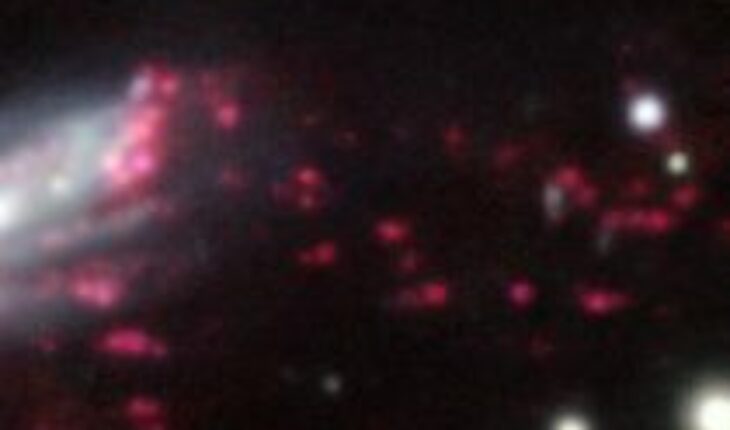A citizen science project will aim its gaze at jellyfish galaxies, the University of Chile reported.
These galaxies are very rare and difficult to find, to the point that until today only a few hundred of them have been identified. Some have been found in distant corners of the Universe, while others are much closer, a strange type of galaxy characterized by long tails of gas, which give them an appearance similar to such sea creatures.
A new citizen science project on the Zooniverse.org platform dedicated to these galaxies, will allow us to massify their search and understand the complex process of their formation in great detail.
The astronomer of the Institute of Physics and Astronomy UV, Yara Jaffe, who is part of the project and has been studying them for years -together with her team- considers them of critical importance to understand the evolution of galaxies, since they represent the beginning of a stage in which, they lose their ability to form new stars and, therefore, they die.
This happens because these galaxies collide at high speed with massive clusters of galaxies that attract them gravitationally. Upon entering the cluster, the galaxies are confronted with a dense intergalactic medium, which manages to drag the gas they brought with them (from which they form new stars) forming impressive tails. Eventually galaxies lose all their gas and stop forming stars, leading to their death.
“They represent a very important stage in the evolution of galaxies, so we need to find many more. At first we started classifying them ourselves, but we realized that it was a huge job for a handful of astronomers. This is how this project was born, where scientists from Italy, the United Kingdom and Chile participated,” explains Dr. Jaffé, who is also a researcher at the CATA Center for Astrophysics.
The project is integrated by an international team of researchers who are part of another large project called GASP (GAs Stripping Phenomena), an initiative that uses the MUSE instrument of the Very Large Telescope (VLT, of the ESO in Cerro Paranal, Antofagasta Region) to observe and study in great detail the elusive jellyfish galaxies.
Dr. Jaffé explains that a few decades ago it became known of its existence.
“They started reporting and some people called them comet galaxies, or tadpole galaxies. One of our goals is to understand the processes of removing gas – the component that galaxies use to form new stars – since we think it is possible to understand the future of galaxies like ours, including their death. When they run out of gas, galaxies essentially begin to die,” says the scientist.
Hunting for Jellyfish
Jaffé explains that the project page “looking for jellyfish galaxies” in Zooniverse includes a tutorial to help identify them, which allows you to see the differences of different types of interacting galaxies, as well as appreciate the “jellyfish” from different angles to recognize them.
All the material will allow to classify this type of and make statistical studies, to understand in detail where this phenomenon leads, and the fate of jellyfish galaxies once their gas is completely exhausted.
Follow us on





